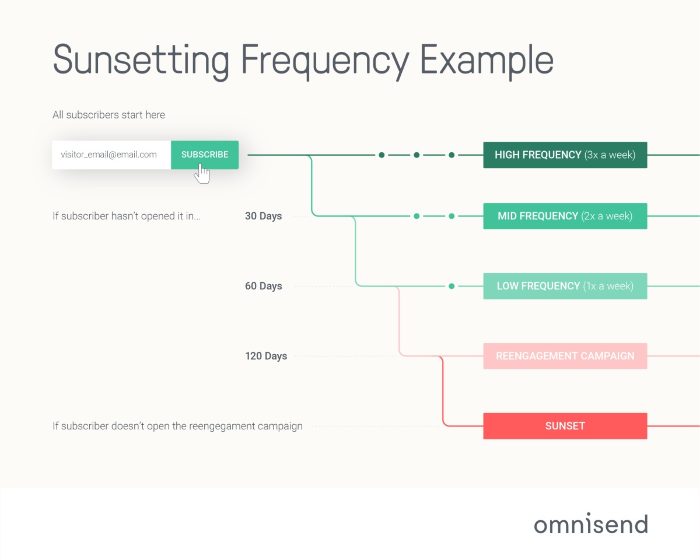Here’s something to think about:
according to data, 1 out of 5 emails never reaches the inbox (ReturnPath).
You may boast an envy-worthy email delivery rate, but up to 25% of your email marketing efforts could still be in vain due to a low deliverability rate.
Yes, there’s a difference – and it could be the key between profitable campaigns and total blunders.
Email deliverability vs. email delivery rate
Here are the definitions:
Email delivery rate = percentage of your emails that get into any inbox (including spam).
Email deliverability = percentage of your emails that get into the primary inbox.
So you can see why so much importance needs to be placed on email deliverability. It is a much better indicator – even if you have a high delivery rate, your deliverability can still be a serious problem.
How do you measure email deliverability?
Email deliverability is a complex measure.
It depends on many elements: your service provider, sender’s domain, quality of email list, email frequency, IP reputation, and overall sender’s reputation profile among them.
While we are all striving to have 100% of our email delivered, Return Path claims that “just 79% of commercial emails land in the inbox”.
For general email marketing (not including cold email), 95% or more is considered a good delivery rate.
Coupled with a bounce rate no higher than 3% and a SPAM rate below 0.08%, you’re looking at a mighty excellent email deliverability rate.
So, to recap, aim for:
- a delivery rate of 95% or more
- a bounce rate of 3% or less
- SPAM rate below 0.08%
Common email deliverability problems
Even if you discover that many of your emails are ending up in your subscriber’s spam folders, don’t panic.
Many common email deliverability issues are well known, and while it may take time and effort to fix them, they are fixable.
Let’s take a look at the five most common ones:
#1. A high complaint rate
People, in general, don’t want to receive an email they didn’t ask for.
Now, there is a bit of a grey area. If someone subscribed to get a free e-book on gardening tips, it is OK to send them more tips? Certainly. How about promotions or discounts for gardening tools? In general, yes – however, more people might mark such an email as spam, especially if you send it to them too soon in your email funnel.
If you see a lot of your email ending up in spam, think about what you are sending from your subscriber’s perspective: are they receptive to what you are offering?
#2. A high bounce rate
You can have a high bounce rate for several different reasons, but usually, the main culprits are an outdated, low quality, or purchased email list. Inbox providers aim to send just such directly to spam – so make sure you are working with quality email leads.
#3. Low engagement
If your subscribers aren’t opening your email, that is a bad sign to inbox providers.
The solution for this is two-fold:
On the one hand, you need to make sure to craft exciting subject lines that compel people to open your emails and fill your emails with content they like, so they will continue opening your emails in the future.
On the other hand, some people will never open your emails despite subscribing. In such a case, email list cleaning becomes important. You can send less regularly to them than you do to the rest of your email list, you can run a reengagement campaign or, if all else fails, remove them from your list.
A smaller but engaged list is worth much more than an extensive email list where many emails don’t get opened – and more cost-effective.
#4. Too frequent campaigns
Email is somewhat like people:
you’d like to hear from most people you know once in a while, and from people, you like a few times in a week – but there are very few people you want to hear from daily or multiple times every day, and none such emails.
It is best to keep your frequency to 2 or 3 times per week for most email lists. Some will do better with daily emails and some with weekly or even just monthly. It depends on your business, what your subscribers expect, and what you are delivering to them.
Email frequency is worth experimenting with, but in most cases, 2-3 will be the Goldilocks number.
#5. A sudden increase in the number of emails sent
If you suddenly double or triple the number of subscribers you send emails to, this will register as a suspicious activity.
From the viewpoint of an inbox provider, they can’t know if your new subscribers are from another list you nurtured or just people about to be very angry about your spam – so they might penalize you regardless.
If you are adding new subscribers, make sure to do it gradually – this is a technique called “sunsetting.”

#6. Constantly switching between email service providers
This is another tell that inbox providers can see spam behavior, as it is common when trying to hide one’s previous spam trail.
How can I improve my email deliverability rate?
By following some email best practices, you can dramatically improve your deliverability rate and other aspects of your email marketing.
#1. Make sure people WANT to open and read your emails.
First, before we talk about content and subject lines, you need to make sure you have full consent to send emails.
What that means depends on your local law, but in most cases, opt-ins (or two-step opt-ins) and GDPR compliance is a great starting point.
Once that’s done, delivering great content (whether that’s useful information or a great offer) is key to nurturing your contacts over a long period. If you combine it with great subject lines, you have a pretty good recipe for email success.
#2. Nurture high engagement and a high click rate
The previous point leads nicely into this one: as an email marketer, your engagement and CTR are everything.
Therefore, you should do everything you can to make sure they stay high. The most common enemy of this is complacency – when things are good enough, it is easy to stop being proactive and always look for the small improvements.
#3. Keep your email list clean
Email list cleaning is something everyone should be doing regularly.
Per HubSpot, 30% of subscribers change email addresses once per year. Like we mentioned before, every subscriber that is not opening your emails is hurting your deliverability.
How often you should do it depends on how many new subscribers you are getting, but in general, four times per year or once per quarter is a good start.
The how-to of it is not that complicated – just very time-consuming. For smaller lists, you could do it yourself, but it is best to use dedicated tools that get the job done quickly and accurately for larger ones.
Better emails, better business
Email deliverability is just one piece of the larger email marketing puzzle.
But as we have seen, it is a key piece, because it interacts – in one way or the other – with all other pieces.
We hope you found some actionable insights and that tomorrow, next week, or next month, you will be able to look back on this article as the catalyst that started your email transformation.

